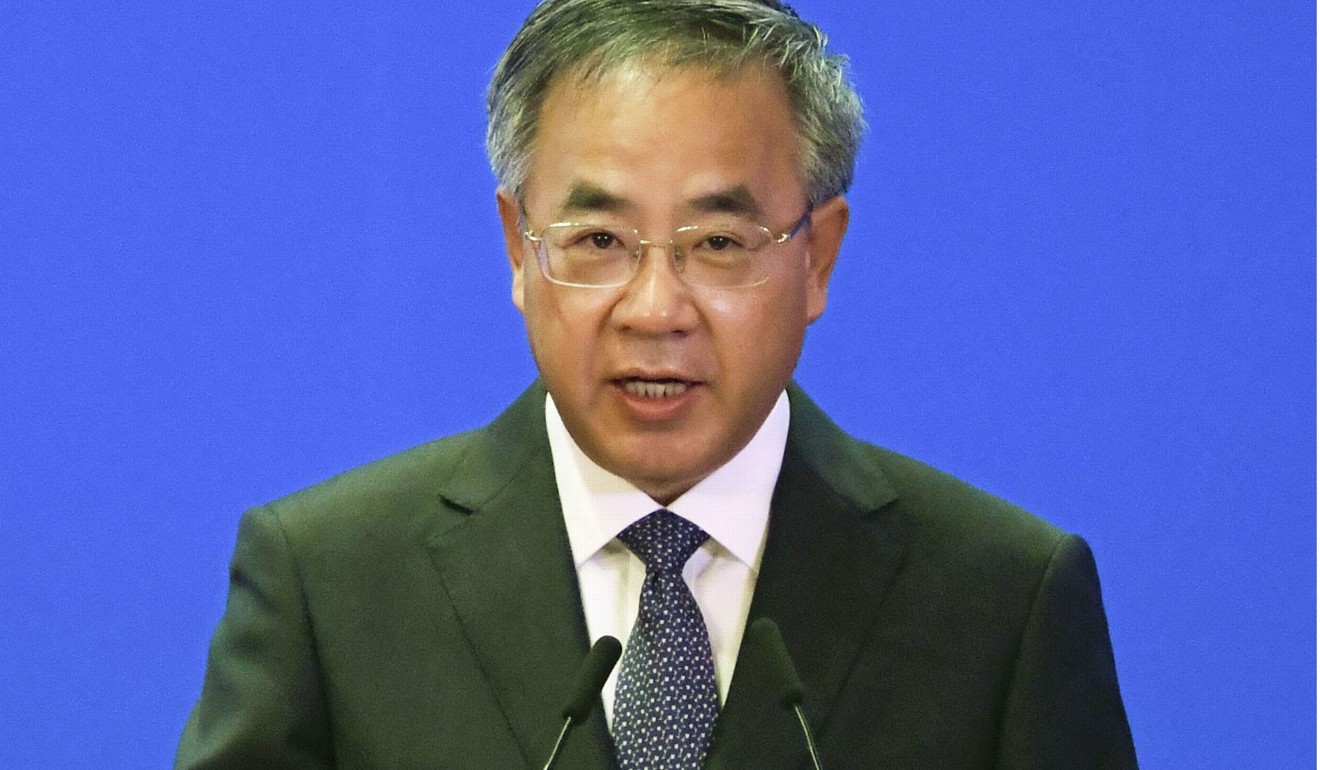
China claims progress on creating world’s largest trade bloc, but ‘very difficult’ issues remain
- After Beijing meeting, ministers give differing opinions on whether Regional Comprehensive Economic Partnership can be achieved by end of year
- Indian official says reports that New Delhi is an obstacle to deal are ‘rubbish’
A meeting of trade ministers attempting to create the world’s largest trading bloc without the United States wrapped up in Beijing on Saturday, with China claiming further progress, though there were “very difficult” negotiations ahead.
Trade delegates to the two-day meeting gave differing opinions on whether negotiators could achieve their stated goal of finishing the Regional Comprehensive Economic Partnership (RCEP) by the end of the year.
“The meeting has made important progress in the negotiations,” according to a statement released by China’s commerce ministry after the event.
A joint statement by all 16 nations taking part in the negotiations was more circumspect.
“As growth outlook remains clouded by rising uncertainties, it is in the region’s collective interest and highest priority to conclude a modern, comprehensive, high quality and mutually beneficial RCEP in 2019, as mandated by the 16 RCEP leaders,” the joint statement said.
The ministers also urged member states “to find pragmatic and solution-oriented approaches to narrow divergence on the various remaining issues”.
The next RCEP trade negotiating committee meeting will be held in Jakarta later this month and a ministerial meeting in Bangkok in September, according to a statement from the Japanese delegation.

Chinese Vice-Premier Hu Chunhua, who spoke at the start of Saturday’s session, said more than 80 per cent of the issues in the RCEP text had been finalised, but there remained several “very difficult” issues to be resolved in the next five months to complete the pact. They included market access, rules for e-commerce, intellectual property protection and investment restrictions.
Hu called on all member countries to take more flexible positions on the question of market access to seek common ground. “Taking a step back might ruin all the previous efforts,” he said. “Perseverance will lead [us] to the final victory.”
As currently conceived, the RCEP would include the 10 Association of Southeast Asian Nations member states as well as China, India, Japan, South Korea, Australia and New Zealand. Its members would account for about one-third of global GDP, 40 per cent of global trade and nearly half of the world’s population. The Asean members are Indonesia, Thailand, Malaysia, Singapore, the Philippines, Vietnam, Brunei, Cambodia, Myanmar and Laos.
Can China’s trade boost with Asean help get RCEP over the line?
India has been widely regarded as a “stumbling block” standing in the way of completing negotiations, as the country’s industry is openly opposing the lower tariffs and greater market access for foreign products that would come with the agreement.
Anup Wadhawan, the Indian commerce secretary who attended in Goyal’s place, rejected the “accusation” that New Delhi was an obstacle to a deal.
“That’s totally rubbish. So many things are being negotiated between countries, they are being negotiated obviously because on some issues, they still haven’t reached an understanding. There are issues with every country. If you look at it negatively, then you can see every country is a stumbling block,” he told the South China Morning Post on the sidelines of the meeting.
He added that the chance of concluding negotiations by the end of this year looked “reasonable”.
About 20 minutes before the opening ceremony, Chinese Vice-Commerce Minister Wang Shouwen came to the conference hall and greeted the Indian delegation. He said “welcome” in Chinese and shook hands with Wadhawan, but there were no further exchanges between them.
China continued to send a strong message that it was keen to finish the negotiation this year. Hu mentioned the goal of concluding the agreement before year end nine times in his 13-minute address.
In June, Chinese President Xi Jinping vowed at the Group of 20 meeting in Osaka, Japan that China “will push for an early conclusion of RCEP”.
Last week, the Asean leaders also vowed to try to conclude the negotiations by the end of the year.
But the deal has been repeatedly delayed since negotiations first began in 2011. There have been 15 rounds of ministerial meetings, 27 rounds of working-level negotiations as well as two summits of leaders on the subject. Before the ministerial meeting this weekend, China also hosted the 27th round of RCEP working-level talks in the central city of Zhengzhou. The 10-day meeting ended on July 31.
Beijing calls on Tokyo and Seoul to ease trade dispute through dialogue
The atmosphere for this weekend’s ministerial meeting was also complicated by the escalating trade dispute between Japan and South Korea.
Delegates from Tokyo and Seoul were extremely cautious in their statements to the press at the venue. During the 25-minute opening ceremony, Japanese Trade Minister Hiroshige Seko sat next to his South Korean counterpart Yoo Myung-hee, but there was no interaction between the two.
South Korea’s foreign ministry tried to arrange a meeting between Yoo and Seko at the RCEP talks, but Japan declined, saying its minister was too busy, according to South Korea’s Yonhap news agency.
The dispute began on July 4, when Japan tightened controls on exports to South Korea of materials critical to the manufacture of semiconductors. Japan’s move came after Seoul’s decision to let South Korean courts seize assets of Japanese companies to compensate individuals who claimed to have been forced to work for Japanese companies during World War II, after the country’s Supreme Court ruled that a 1965 treaty in which Japan paid compensation to South Korea did not cover claims by individuals. On Friday, each country removed the other from its “white list” of nations that receive preferential trade treatment.


